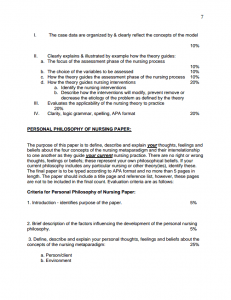 APA style is widely used within social sciences works. It has strict rules of formatting which are essential to keep to. Example of APA formatting will help you to avoid common mistakes and get the highest mark among your classmates.
APA style is widely used within social sciences works. It has strict rules of formatting which are essential to keep to. Example of APA formatting will help you to avoid common mistakes and get the highest mark among your classmates.
General formatting rules:
- Do not use page breaks between such work sections as introduction, method, results and discussion.
- The title page, abstract, references, tables, and figures should be placed on their own pages.
- The entire paper should be written using the past tenses, in a 12-point font, with double space and with 1 inch margins all around.
Title page
The title should contain between 10-12 words and should reflect research content.
- Title, author’s name, and educational establishment name should be all double-spaced without any extra spaces.
- Create a page header with the help of the “View header” function in MS Word. The title page header should include the following:
- Flush left: Running head: THE RUNNING HEAD SHOULD BE IN ALL CAPITAL LETTERS. The running head is a short title that appears at the top of pages of published articles. It should not be more then 50 characters, including punctuation and spacing. (Pay attention that you write the words “Running head”on the title page, but they do not appear on subsequent pages as they are substituted by the actual running head.)
- Flush right, on same line: page number. Use the toolbox to insert a page number, so it will automatically number each page.
Did you Know we can Write your Essay for You?
Abstract
- 1. It should be labeled, centered and not bold.
- It should have not more than 120 words, consist of one paragraph, block format, double-spaced.
- State the topic of your research, preferably in one sentence. Provide brief overview of used method, achieved results, and discussion.
Introduction
Introduction in the APA style paper is one of the most difficult things to write. A good introduction should summarize, integrate and evaluate the empirical knowledge of the relevant area in the way which sets the stage for your research study and explain why you conducted it.
- Do not label it as “Introduction. The title of paper goes at the top of the page and is not bold.
- Start your introduction broad and get it more focused towards the end.
- State your purpose briefly to give a reader a a scheme of the information your are going to present next.
- Your introduction should lead up to your hypothesis.
- Organize your introduction in forms of the ideas instead of presenting who did what and when.
- It should be labeled, centered, and bold.
- The goal of this section is to describe the details of your study so that other scientists could duplicate your method exactly.
- This section should include Participants, Materials, Apparatus and Procedure parts.
- All these parts are labeled, flush left, bold.
Method
Results
Results section should be labeled, centered, bold. It describes how you analyzed the data and what you found. If your data analyses were very complex, you can break this section down into labeled subsections, one section for each hypothesis.
- Include into results the section for descriptive statistics.
- List the type of analysis you conducted each hypothesis.
- Provide presentations for all statistics and numbers in your research paper.
- Save all the interpreting and explaining of the results for the Discussion section.

Discussion (labeled, centered, bold)
The main goal of the discussion is to provide interpretation of your findings and place them in the correct place in the literature. A discussion is a reverse introduction.
- Discussion section is labeled, centered and bold.
- Start with the specifics and work to more general information.
- Show how your findings tie into the already existing literature on the topic or the way they extend previous researches.
- Present what is the difference between the results of your study and the results of other researches.
- Sum up your research paper in the final concluding statement.
References
An alphabetical listing of the references presented in the Reference section. The list is alphabetized by the last name of the first author. There shouldn’t be any extra spaces between references. The second line of each reference should be indented.
Table/Figure
Tables in the APA style essays can be of various types, according to the information you want to include to it. Don’t forget to provide numbers and titles for every table and figure.
With the help of the example of APA formatting presented above you can create an essay according to all the rules of APA style formatting. 

